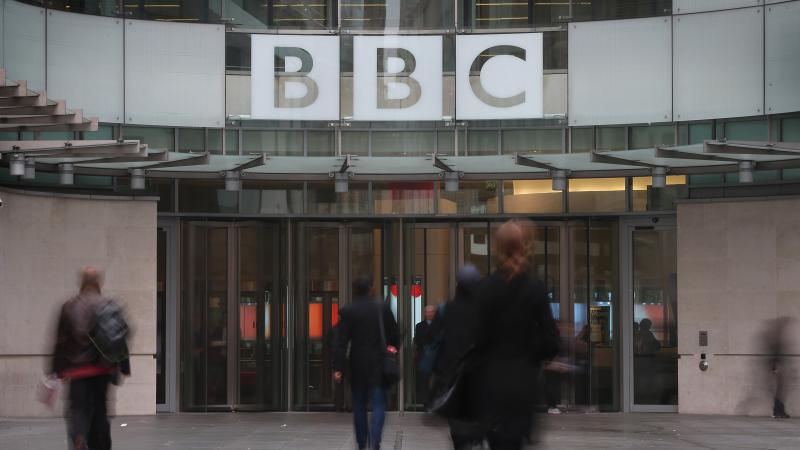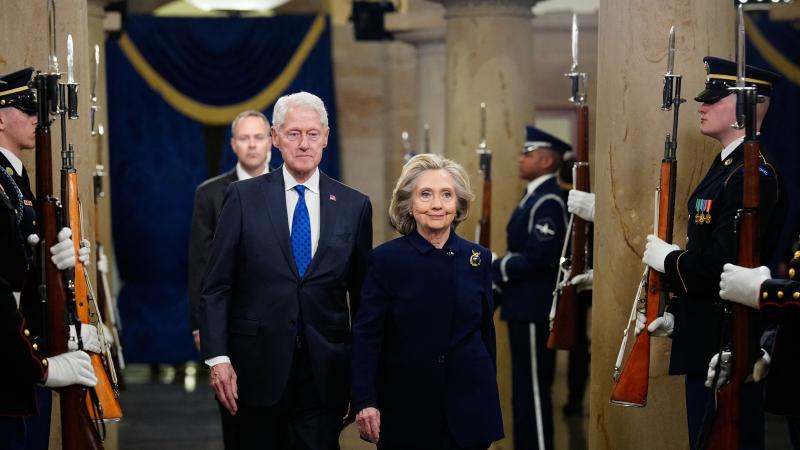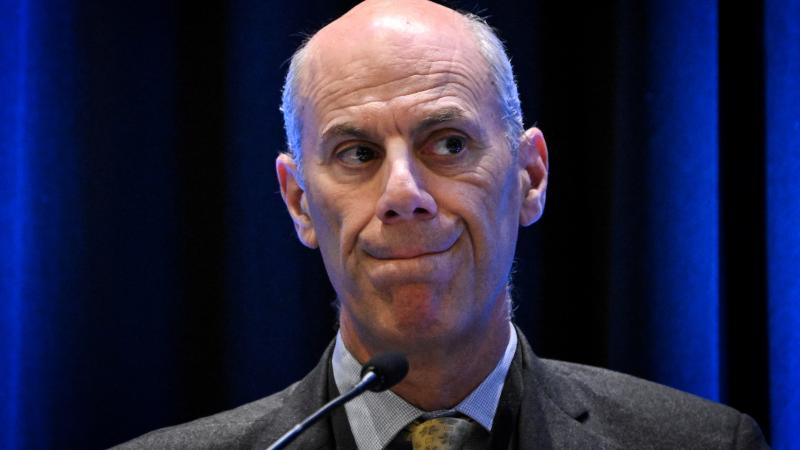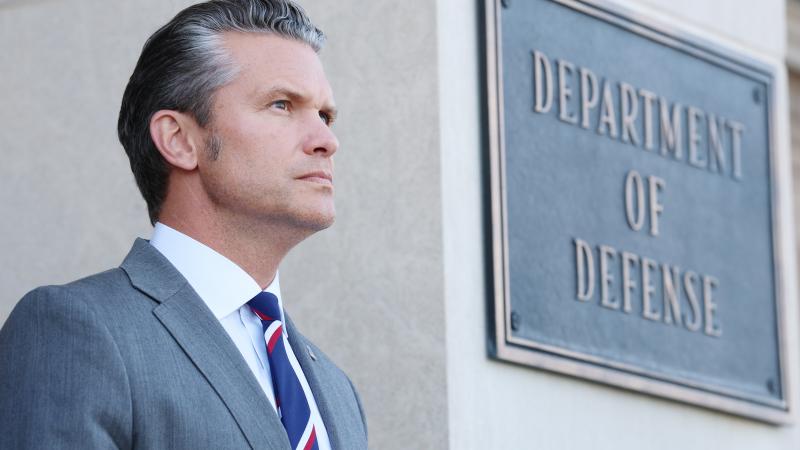Sharyl Attkisson exposes the Smear industrial complex

A deep dive into the shady forces that influence our thoughts and votes as we prepare for the next presidential election.
Full Transcript:
Sharyl Attkisson 0:08
Hi everybody, Sharyl Attkisson here. Welcome to another edition of the Sharyl Attkisson Podcast on JustTheNews.com. I hope you'll consider pre-ordering my new book that's coming out Slanted: How the News Media Taught Us to Love Censorship and Hate Journalism. Just look it up under Slanted. Today we're going to take a deep dive into the Smear Industrial Complex as we round the corner full steam into the 2020 election.
Sharyl Attkisson 0:44
We are talking about what I have labeled the Smear Industrial Complex. And this is something that comes into play with a lot of topics that people want to have influence on when it comes to their perception or what we hear about them in the news and on social media, especially when we're coming into a presidential election year.
Sharyl Attkisson 1:08
The Smear Industrial Complex is pervasive in a way that you're not really supposed to notice. It's a shapeshifter. It can be transformed accordingly to use against targets that are identified maybe by corporations, or competitors of somebody, like governments, politicians. It can be used by candidates for elected office. And we can go way back to 2000 as the influence of the internet was expanding and we saw the power of what I call the Smear and the Smear Industrial Complex grow exponentially. You might ask, how big is the smear industry? And the answer is it's really impossible to quantify, at least with any precision. But I can tell you this much. It employs tens of thousands of people and it constitutes an economy worth billions upon billions of dollars. It's really remarkable in its scope, especially considering that it kind of operates on a secondary level under the radar. So, what are the components of the Smear Industrial Complex? PR firms. That's the first one we'll discuss. There are thousands of powerhouses controlling incredible sums of money. PR firms based in Washington, New York, elsewhere. The biggest PR firm in the world in 2016 was Edelman and I looked up some figures. At the time it collected $854 million in fees in 2015 and employed 6 thousand people. Now for most PR firms, they don't say what they do is smear and that's not all of what they do. But the smear is an important fee generator for a lot of PR firms. The actual duties might be called something else. Maybe they're called 'crisis and risk.' Maybe 'strategic communications,' 'rapid response,' 'public engagement,' 'reputation management.'
Sharyl Attkisson 3:05
And if we add up how big this business is, we know that the top 20 Public Relations firms brings in about 100 million dollars a year or more. And what section of that is devoted to smearing or is part of the Smear Industrial Complex, we're kind of left to guess. But you can look at their role, their surreptitious roles in some astroturf and smear campaigns. Here's a couple of examples. In 2006, a YouTube user posted a spoof that was critical of the global warming documentary called An Inconvenient Truth. That was the one by former Vice President Al Gore. So it was a two-minute-long parody, and it was called 'Al Gore's Penguin Army.' And it was the one and only video posted by someone who called himself Tout Smith. Well, the Wall Street Journal did a little detective work and traced routing information in an email from this Tout Smith to a computer that was registered to a Washington, DC PR firm called DCI group. And DCI group would not answer whether it was the one who made the penguin video on behalf of a client. But certainly, one could theorize that that's the case.
Sharyl Attkisson 4:23
In 2006, PR firm Edelman Communications got caught manufacturing news on behalf of Walmart without disclosing that it was a sponsorship. And it started with a supposedly grassroots blog called WalMarting Across America, that was supposedly written by a couple of ordinary people who were chronicling their travels in an RV parked in Walmart parking lots. But in a matter of weeks, it was exposed that the blog was actually a promotional tool for Walmart's working families for Walmart campaign which was launched by Edelman communications.
Sharyl Attkisson 5:00
Another example: in 2009, PR and lobby firm, Bonner and Associates got outed for sending letters to members of Congress under a fabricated letterhead of the National Association for the Advancement of Colored People, NAACP, and a Hispanic nonprofit. Now, the letters urge Congress to vote against a bill to curb greenhouse gas emissions. And once all this was discovered, the PR firm Bonner and Associates blamed the forged letters on a temporary employee and said the person was fired.
Sharyl Attkisson 5:34
That PR firm DCI group also figured into a cloaked attempt to kill financial reforms after the big bank bailouts back in 2010. And even a Massachusetts Institute of Technology economist named Simon Johnson got suckered in on that. Johnson told reporters later that he was approached by the PR firm DCI group to take part in a conference call with an organization called Stop: Too Big to Fail. And based on the name, he says he thought the group was like him, opposed to taxpayer bailouts of giant Wall Street banks that were in financial trouble after their risky and sometimes fraudulent loan practices. But anyway, after the conference call Stop: Too Big to Fail posted Johnson's photo on its website, this Massachusetts Institute of Technology economist, and, you know, call him basically a supporter to confer legitimacy and what they were calling a consumer movement. But Johnson said he was shocked to learn that Stop: Too Big to Fail was actually part of a $1.6 million ad campaign by a financial industry front group that was called Consumers for Competitive Choice.
Sharyl Attkisson 6:49
Let's see a couple more examples... I've chronicled quite a few but let me skip around to 2011. The PR firm Burson-Marsteller got some notoriety in a covert smear campaign called Whisper Gate. At the time, the internet giant's Google and Facebook were competing against each other in what was a $28 billion online advertising market and a PR agent from Burson-Marsteller reached out to a tech blogger named Christopher Soghoian and asked the tech blogger to write a critical op-ed about a Google product. So, if you're following me, a PR firm representing one company reached out to a blogger asking him to write a critical blog about another tech company that was a competitor. And this story was told by Soghoian. He said that Burson-Marsteller offered to draft the op-ed for him and to get it published in what the PR firm called a top-tier outlet, and as an example, they gave, 'hey, maybe it'll get published in The Washington Post, or Politico, or The Hill or Roll Call or The Huffington Post. In other words, Burson-Marsteller wanted to use Soghoian as a stooge to publish a critical piece about Google, that presumably nobody would know was actually financed by a PR firm working for Google's competitor. And Soghoian, the blogger, deduced that Burson-Marsteller, his client was probably a Google competitor. And he even asked Burson-Marsteller, who's paying for this? And he said, not paying me, but who's paying you? And the Burson-Marsteller agent, answered, quote, I'm afraid I cannot disclose my client, yet. And Soghoian actually went public with this. Burston-Marsteller later admitted that it was working on behalf of Facebook. So, these are just a few examples of ways that PR firms operate behind the scenes and these are just some of the ones we know about, but in ways that you're really never supposed to know but that's intended to influence your opinion, and maybe not let you know exactly who's behind it. We'll have more on this in just a moment.
Sharyl Attkisson 9:15
We're talking about the Smear Industrial Complex, which is a very powerful force, especially going into a presidential election. And I already talked about PR firms and the roles that they can play. Another category though is super PACs and dark money. Big influences. These categories raise money for political candidates and causes, and sometimes their donors might not be disclosed or their donation trails are murky or hidden. Some call that dark. Dark money. Well anyway, they employ teams of opposition researchers, campaign trackers, character assassins that operate around the clock really to distract and attack.
Sharyl Attkisson 10:01
Let's go back to 2016. We know that 2,408 super PACs reported raising nearly $1.8 billion in the campaign cycle. Now these numbers, which you can look up yourself, are according to the Center for Responsive Politics. You can google it under open secrets. Open secrets is a great campaign money resource Center for Responsive Politics. You can go to opensecrets.org. And there's all kinds of way you can search for information: by election cycle, the name of the candidate, the name of the company, the name of the donor. It's really interesting, informative to poke around on there.
Sharyl Attkisson 10:45
So, according to the Center for Responsive Politics, the largest single super PAC was at the time, by far, in terms of cold hard cash, the Pro-Hillary Priorities USA Action, which got more than $192 million in the 2016 election cycle. Priorities USA Action spent more than $69 million, for example, on media buys, including ads for TV, radio and the web in the 2016 campaign. What group came in second place in terms of money, it was the Conservative Right to Rise, and that was the group backing Republican Jeb Bush. Think about it though, that was an epic fail because of for bang for the buck. Right to Rise spent all of that money only to have Bush plummet from frontrunner status to a flameout by March of 2016, as we all know. Super PACs, let's digress for a moment, are a powerful campaign funding vehicle made possible through the January 2010 Supreme Court decision called Citizens United and unlike the candidates' official fundraising operation, super PACs are technically not allowed to coordinate directly with a candidate. And they can collect unlimited political donations. And the supreme court also ruled that corporations and unions can make donations to super PACs. What do they do? Well, one staple of these groups is negative advertising, the dirty work. While the candidates can kind of maintain a more positive facade, if they want to, these super PACs can put all kinds of ads out there. And the candidates can claim, you know, they really had nothing to do with it. They spend huge sums, which shows you how important this is. Go back to the 2014 election cycle, and the total number of campaign ads topped 2.2 million and the vast majority of them were negative. More than 70% of the pro-Republican ads in Senate races, for example, were negative and more than 90% on the Democrat side, were negative. Try following the money when it comes to these kind of super PAC and dark money groups and it can be virtually impossible.
Sharyl Attkisson 13:05
Take, for example, three republican social wealth welfare groups. They were called 60+ Association, the American Future Fund, and Americans for Job Security. Well, under federal law, these groups have to disclose the source of donations for any cash that are earmarked for political activities such as ads. If it's not for political activities, they don't. But if it is used for ads, they have to say where the money came from. Well, in 2010, we know that three groups failed to disclose the source of their money for some ads that they bought that actually came from an organization financed by the conservative Koch brothers. The funding was basically exposed in a news interview accidentally when a Koch official admitted that he not only decided which races the money was going to be spent on, the money in question, but he says he also subcontracted to produce and develop some of the commercials. So, that kind of gave it all away. And in 2016, the Federal Election Commission fined the group saying they should have disclosed the Koch donations. But I think a lot of times, it's accepted or understood that there are some connections and coordination with campaigns and these dark money groups and super PACs that are not disclosed.
Sharyl Attkisson 14:28
The next category in the Smear Industrial Complex that come, become very important during election year: nonprofits, think tanks and LLCs. You know, they're kind of nebulous. When you talk about nonprofits, this includes charities, the first thing that may come to your mind is charities do good things. Well, some charities indeed do good things, but a lot of them are fronts for groups that have agendas, corporate or political agendas, and you don't really know who's behind them or what they're doing. The revenue from these organizations that sometimes have conservative and liberal billionaires behind them or corporate interests that want to stay in the shadows. It's expanding like crazy. It doubled from the 1990s to the, let's say, 2000-teens, partly due to the fact that people started to understand that could be used as mechanisms for propaganda and smears. The structures of these organizations, nonprofits, think tanks, LLCs. They provide a lot of advantages, lacks federal oversight, a lot of flexibility in what you can do with them. And since many of them get tax-exempt status, you're helping to pay for them. Just like with PR firms, these entities don't generally publicly report how much they're spending on what I would call smears that even a small portion of their funding spent on this can be a significant sum because if you consider there were 1.41 million registered nonprofits back around 2013, they had a combined revenue of $1.73 trillion.
Sharyl Attkisson 16:11
Now, what would a typical nonprofit involved in a smear campaign do? Well, they might begin by issuing a press release or what they call a news article with a title that will grab attention and define the parameters of what they want you to think. In just a few words, the headline will tell you what you should question or turn against and why. And this article, as they want it to be accepted, will get distributed by email, social media, reporter lists, maybe some well-placed calls will be made to certain journalists to alert them to the, quote 'story.' And then partners in the blogosphere, the quasi news organizations, they disseminate the appropriate talking points. And may quote people they call experts who agree that the public should be angry about whatever it is that we're supposed to be angry about or suspicious, or question, or hate. Now, mind you, these experts that they turn to, that appear in public and are quoted in news stories and on blogs and social media. They've been trained and sometimes paid by smear groups. So, they're glad to provide the necessary speculation of opinion. They quote each other and then they call it proof that their claims against the chosen target are true. They're hired guns, but some of the news media will blindly accept what they say and invite them on and not ask what their possible conflicts of interest or their sources of funding are.
Sharyl Attkisson 17:41
In this scenario, volume and speed are pivotal to creating the impression that this is all a grassroots reaction. The movement has to appear to be organic with no fingerprints, and when successful, pretty soon there are memes and hashtags and one-liners, cartoons, advancing this smear. It takes on a life of its own. People start to see all the fuss on social media, on TV, in popular publications and become convinced that they're receiving special insight on the topic in question that makes them part of an exclusive group. You know, they think they're sort of on the inside.
Sharyl Attkisson 18:20
And if nonprofits that are behind some of this aren't always what they seem to be neither are think tanks. To most Americans, I don't know, they probably don't even know what a think tank is. I certainly wasn't sure when I moved to Washington, DC, and started hearing about them and they would offer up there experts for comment or we would seek them out. They're kind of mysterious groups whose work is given a great deal of weight by politicians in the media, I think because they're called think tanks. Think Tank experts and the reports that they generate are often quoted in news articles and used as support on Capitol Hill to argue for or against certain policies. They're kind of passed off a lot of times as if they're independent research bodies to confer legitimacy to topics about which they publish and speak. There's lots of these in Washington, DC, but they're kind of their own sub-industry. Some of them are, the State Department lists 59 of them, by the way. You can look them up, foreign policy think tanks on their website, like Brookings Institution, Cato Institute, RAND Corporation, Nixon center Heritage Foundation. They're places where a lot of ex-diplomats, politicians, generals, ex-federal bureaucrats, administration officials, that's where they end up when their government jobs end, and it's kind of like the hand of government washing the hands of the think tanks and vice versa.
Sharyl Attkisson 19:46
Like many associations in politics, these relationships are mutually beneficial. Now, don't get me wrong because many think tanks do, I think, produce worthwhile investigation and analysis. But as you can imagine, special interests have increasingly found ways to get their nose under this tent, too. How to use think tanks to execute smears by exploiting the legitimacy that think tanks confer. They can secretly shape public opinion policies and laws to the advantage of certain special interests. There's been quite a bit of reporting on this. There was a great expose in August of 2016 by the New York Times and The Center for New England Investigative Reporting, so you could look that up if you're interested in reading the whole thing. That's August of 2016. The New York Times and The Center for Investigate-- sorry, the Center for New England Investigative Reporting, talking about the impossibly blurred lines between some think tanks and the projects that they work on, on behalf of corporate donors. A couple of quick examples. The Times looked at the Brookings relationship with Microsoft, Hitachi and JP Morgan Chase. Chase, I guess shelled out, according to this report, $15.5 million in contributions to Brookings and Brookings sometimes provided assurances that its donors would get what it called donation benefits, such as setting up events featuring corporate executives with government officials. That's according to the Times report.
Sharyl Attkisson 21:23
Another case, the Times examined was the Atlantic Council Think Tank and its partnership with FedEx. After FedEx donated to the Atlantic Council, that think tank is should a policy report driving home, of course, the very same points that FedEx had raised so that it would promote a beneficial Free Trade Agreement. And these think tank reports, you must understand, are often used to lobby lawmakers and regulators because they're widely viewed as independent and persuasive as if it's not information coming from a corporation when sometimes that's really all it is.
Sharyl Attkisson 21:58
Another Think Tank, according to the Times, the Center for Strategic and International Studies, got donations from drone manufacturers, Boeing and Lockheed Martin, and then produced a report that supported basically what the industry wanted. And the think tank even helped set up meetings with and convince Pentagon officials and staff to promote the recommendations that it was making on behalf of what turned out to be its donor and client or its donors and clients, the drone manufacturers. Now, the think tank said its efforts did not amount to lobbying, the way they looked at it. But it's easy to see how, I think, the priorities of ordinary Americans can get lost in Washington when agendas are being set by those who can bring their persuasive arguments before the power brokers and advance their own interests and attack their enemies. And they're particularly convincing if they're using these third party nonprofits and think tanks that are perceived somehow as being independent.
Sharyl Attkisson 23:00
The last category I want to talk about in the Smear Industrial Complex. And I'm frequently told these have become more and more important in recent years are LLCs, that stands for limited liability companies. Sort of an emerging tool in the political smear trade. They don't have to disclose the names of their donors, and they can conduct any sort of political activity. So, it's a convenient way for those who want to fund political efforts but keep their name secret. Now, the downside for them is their for-profit enterprises, so they have to pay taxes on the contributions they receive. It's something that super PACs and the tax-exempt nonprofits don't have to do. And they have to spend more than half of their time, these LLCs, on non-election-related activity, at least that's a requirement. Their primary purpose must be something other than election spending or they turn into a political committee under the eyes of the law and do have to disclose their donors.
Sharyl Attkisson 24:00
But LLCs according to those who look at all of this, are playing an increasingly important role in campaign financing for both parties, Democrats and Republicans. Will Tucker of the Center for Responsive Politics told me that the way LLCs are intersecting with money and politics, they were increasing contributions from LLCs to super PACs, which he said is totally legal, as long as the LLC isn't just a paper company. But if the whole thing is set up to take money and then direct it to a super PAC in a way that you don't get to know who the donors are, he says that can become very problematic. It can be what lawyers call a straw donation, when a donor gives money to another donor to give money for them keeping their name off the campaign reports. So, which ones to look out for if you're digging well, Center for Responsive Politics says LLCs that especially deserve a skeptical review are often the ones set up in places like Delaware or Wyoming. These are states that have lax laws on disclosures for their companies and thus they become very attractive for people who want to hide those kinds of transactions.
Sharyl Attkisson 25:15
Now an example of a smear operator that operated both LLCs and super PACs, was a Republican communications strategist named Liz Mayer. And her resume showed, when I was looking at it, that she was once the online communications director at the Republican National Committee and then led what she called a groundbreaking online media outreach effort aimed at electing John McCain, Sarah Palin and Republicans across the country. But after that, during the last presidential election campaign, her website said that she had advised Republican Carly Fiorona. Fiorina, I said her name wrong, sorry. How soon we forget Carly Fiorina. Rick Perry, Rand Paul. She briefly worked for Scott Walker in his run for president. Her company Mayer Strategies is an LLC and in November of 2015 last election cycle, she helps startup an anti-Trump LLC called Trump Card. According to The Wall Street Journal, Trump Card LLC was intended to be, quote, 'a guerrilla campaign backed by secret donors to defeat and destroy Trump's candidacy.'
Sharyl Attkisson 26:34
And in an interview that Mayer apparently gave to the Wall Street Journal when they asked, she acknowledged, this is a quote from her, 'I certainly know donors who are very happy that their fingerprints will be kept off things.' Now, that LLC quickly fizzled out, I tried to interview Mayer for my last book where I discuss a lot of this in-depth and she did not respond to my numerous requests for information or an interview. But she then launched an anti-Trump super PAC called Make America Awesome. And it boasted of using, quote 'unconventional and cost-effective tactics.' It was a smear group. Mayer was cagey at the time about who exactly was paying for this and directing her and the law doesn't require a disclosure.
Sharyl Attkisson 27:20
So, if you looked at Mayer's online job description, I think it said a lot about how operatives like her use social media to use journalists to advance narratives. She wrote that quote, about 90% of journalists get story ideas from online media or use it to conduct research or fact-checking. She went on to say, getting information out through the blogosphere means it gets an audience with mainstream reporters organically. This was all on her website. She said, quote, 'many voters continue to rely on Google search results for information impacting their votes and Google continues to treat blog and nontraditional media results very favorably in its results. There's no easier or cheaper way to deal with search engine optimization than to get favorable coverage out there at a consistent rate.'
Sharyl Attkisson 28:12
So, I don't know, if you listen to all of this and look at these groups that I've mentioned, you get an idea of the tactics and players in the Smear Industrial Complex, and you can kind of get a sense of its scope as we move on to the 2020 election. Think about these players. Think about the influences who are trying to, I don't know, tell you what to think, tell you who to like, who not to like, influence your vote in a way that may not always be fully transparent, in a way that you may not always know who's behind it, who's paying for it, what their reasons are. It's just one more of many reasons to view information skeptically and not just accept at face value, perhaps, without doing a little work of your own. When you hear something or read something, especially when so many people, so many media outlets, so many on the news seem to be on the exact same page. Because if you think about it, isn't it sort of unusual that free-thinking journalists in a free-thinking society would so often be on the same page reporting the same few stories, often from the same viewpoints using the same language and the same words? There's a reason for that.
Sharyl Attkisson 29:39
Hope you enjoyed today's podcast. Check out JustTheNews.com and don't forget to subscribe to the Sharyl Attkisson Podcast and my other podcast Full Measure After Hours. If you believe that independent reporters are a dying breed, I hope you'll consider supporting them by ordering my new book, which addresses the very topic that are most concerning to a lot of us today. It's called Slanted: How the News Media Taught Us to Love Censorship and Hate Journalism. Slanted is available for preorder on Amazon or anywhere right now. Do your own research. Make up your own mind. Think for yourself.













